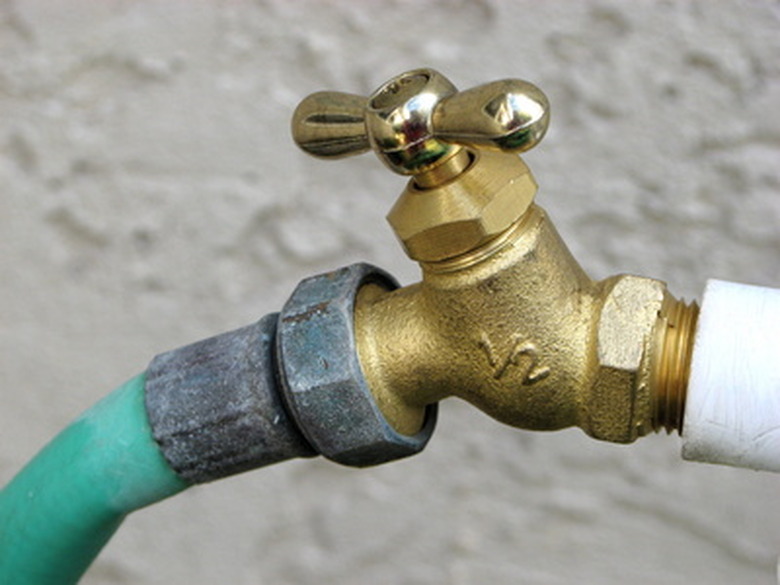Parts Of A Garden Hose
Hoses are necessary garden tools, indispensable for watering crops with a sprinkler or soaker hose, washing off shovels or muddy produce, or spraying soluble fertilizer or pesticides on garden plants. Understanding the different parts of a garden hose, including hose attachments, can help you select just the right equipment for all your garden's watering needs.
Faucet-End Parts
The faucet is the point at which your garden hose system connects to your home plumbing. The first element of the garden hose system connected to the faucet is often a back-flow preventer, which the Seattle Saving Water Partnership advises is required by law in many areas to prevent contamination, such as pesticides or insecticides from hose-end sprayers from washing back into the household water system when the water flow to the hose is shut off. Connected to the back-flow preventer may be a timer, which can turn water flow to your hose on and off automatically through the day, and a pressure regulator, which will keep water pressure smooth and steady to your sprinklers or soaker hoses.
Bend Protection and Couplings
Garden hoses are connected to the faucet, and to more garden hoses or sprinklers, with couplings that are usually either plastic or brass. According to the Master Gardener Foundation of Grays Harbor and Pacific Counties, Washington State, brass hose couplings are generally more expensive, but last longer than the plastic variety. A hose washer is inserted into the female hose connector end. Replacement washers come in inexpensive rolls or sheets at most hardware stores. The Louisiana State University Extension recommends quick-connect devices that screw into the hose ends and snap together by pulling back a collar ring and clicking the two parts together. Brass springs are also available that fit over the hose at the faucet end or anywhere the hose needs to make a sharp bend, to prevent it from kinking.
- Hoses are necessary garden tools, indispensable for watering crops with a sprinkler or soaker hose, washing off shovels or muddy produce, or spraying soluble fertilizer or pesticides on garden plants.
- The first element of the garden hose system connected to the faucet is often a back-flow preventer, which the Seattle Saving Water Partnership advises is required by law in many areas to prevent contamination, such as pesticides or insecticides from hose-end sprayers from washing back into the household water system when the water flow to the hose is shut off.
Hose and Watering-End Parts
Garden hose comes in a variety of diameters, and may be made of vinyl, polyurethane or rubber. The Master Gardener Foundation recommends rubber as being heavier and more durable. Hoses also come in different numbers of plies, or layers, with the thickest often having a layer of cut-resistant mesh between plies which also helps avoid kinking. The end of the hose away from the faucet may include any of a number of different watering devices, including a perforated soaker hose which terminates at an end-cap, a sprinkler, a hand-held nozzle or a hand-held sprayer which includes a plastic jug that allows pesticides or fertilizers to be mixed with the water passing through the hose before being sprayed on your plants.
